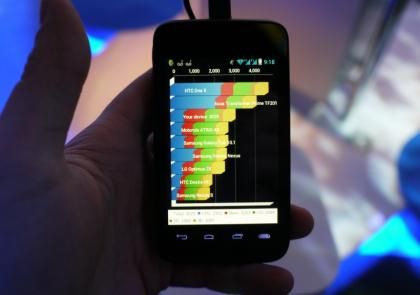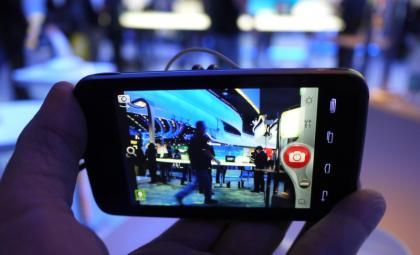UPDATE: We’ve had some time to play with the Lexington reference smartphone, and have updated the story with our hands-on impressions
Intel has officially unveiled the Lexington smartphone platform, using its second generation Atom processors for mobiles, with a mid-range device aimed at emerging markets across the globe. Based around an Atom Z2420 CPU running at 1.2GHz with Hyper-Threading, the reference model will launch across in China, Brazil, Africa and the Middle East over the next six months.

Although it has been built with a specific market in mind, the Lexington reference design holds up well against the entry-level smartphones currently available in the UK. Once we got one in our hands, the rubberised finish and compact dimensions were comfortable to hold and surprisingly sturdy - the buttons all felt firm and nothing felt flimsy or showed signs of flex or bend.
The screen pales in comparison to the likes of Sony's newly announced Xperia Z but it's perfectly usable, with great viewing angles and high brightness. Text was perfectly readable, albeit blocky and pixellated at the 320×240 resolution.

We weren't expecting to be blown away by its performance, but the phone felt somewhat sluggish when loading apps and games. We were able to run the Quadrant benchmark, where it scored a respectable 3029 - hardly slow, but still trailing the likes of Nvidia's Tegra 3 chipset. However, it's still able to run Android and should have significantly better battery life - an important consideration in the countries Intel expects to sell the device.

The Quadrant benchmark shows promising results for Lexington
The camera, a 5-megapixel snapper with 7 frame burst mode, is reasonably capable, even in the low light of the CES show floor, but it won't be taking prize-winning pictures. Intel has created its own camera app specifically for extra features like burst mode, which we found quick and responsive when taking sample shots. The front-facing 1.3-megapixel webcam is ready for skype video calls too.

Although we couldn't test it on the stand, the Lexington platform will also support Intel Wireless Display technology. Market-specific features will include dual SIM card slots, an FM radio and a MicroSD card slot for adding extra storage.
Dual SIM cards in action - note the two signal icons
Intel already has OEM partners on board, in the form of Acer, Lava and Safaricom, who will all be producing smartphones using the platform. The first such devices are expected to be announced and priced in the coming months. We weren't told who made the reference unit, and there were no telltale logos or manufacturer names to be seen on the back.
Intel is being realistic with the Lexington platform - had they announced it for the west, we would have laughed it off as a budget device best suited to your grandparents or grandkids. However, it makes sense in emerging markets and the company has done well to squeeze so many features into a low price device. It's great to see technology making its way into developing markets, with the gap steadily closing between the rest of the world with devices like these.
